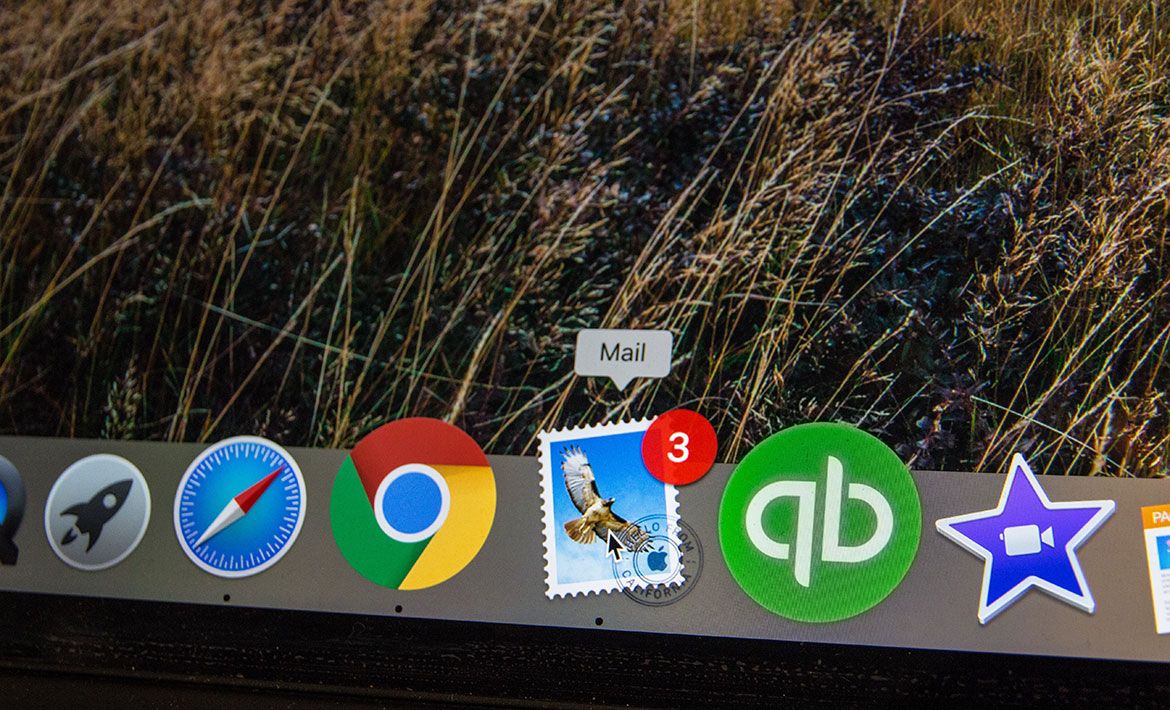EMAIL MARKETING
Hot or Not: Email Marketing Trends for 2021

If there’s one thing the pandemic has made us realise, it’s that plans can change easily. Whatever it is you predict today, may not be accurate tomorrow. You need to constantly keep an eye on the latest trends and projections to stay ahead of the competition.
At the beginning of 2020, there were rumours that email marketing had one last breath to make. Then the pandemic hit, and the tables have turned. Over the last year, companies have swiftly shifted to digital channels, making email marketing hot again!
Email marketers are sending 27% more emails than they then did pre-coronavirus.
[HubSpot]
Absolutely Everything You Need to Know About Email Marketing [+ Templates]
While this is definitely good news, especially since email newsletter engagement figures have also grown, we need to be careful! To match your competition and ace your email marketing strategy, you need to stay on top of the latest trends.
NetHunt is ready to tell you what’s hot and what’s not in the year 2021!
1. Incorporation of Artificial Intelligence Into Email Marketing Practices
Artificial Intelligence (AI) is still a confusing concept for a lot of companies. Both marketing newbies and even more experienced marketers are sceptical about the use of AI for email marketing.
The truth is, there’s more data available online than any marketer could ever collect and process, even if they used advanced technology and edge-cutting software. Contrarily, AI is capable of dealing with this task with minimal effort applied.
List segmentation, content analysis and effective outreach: all the tasks that AI can already do better than humans. There’s also evidence that the scope of AI’s abilities is increasing (soon, it’ll be able to complete most human tasks), meaning it’s time to get a grip of how to use Artificial Intelligence to optimise your email marketing campaigns effectively.
2. Hyper-Personalisation of Email Marketing
There are a lot of different objectives an email marketing campaign can aim for, starting with raising brand awareness and ending with re-engaging customers. However, the end goal of any email marketing campaign is to generate more revenue and make more profit. Over the last couple of years, marketers have concluded that one of the best ways to do that is through complete personalisation.
This trend goes hand-in-hand with the previous one. The use of Artificial Intelligence makes it easier to assure personalisation by obtaining more data about your customers. Regular customers are becoming more and more aware of the volume of information collected about them. Naturally, they expect it to be used to accommodate their needs better; they only agree to give up their personal information in exchange for better-personalised offers.
Unfortunately, there are still companies that fail to grasp the importance of personalisation in email marketing. According to research conducted by Janrain and Blue, almost all consumers (96%) have received mistargeted information or promotions. The most common types of mistargeted email content include:
- “An offer that clearly shows they do not know who I am,” experienced by 71% of customers.
- “Mixed info across different methods of communication,” experienced by 51% of customers.
- “‘Mistakes made about basic information about me,” experienced by 41% of customers.
All of these mistakes can have severe detrimental effects on the outcome of your campaign. Upon receiving a non-personalised or mistargeted email, 94% of customers report taking at least one of the following actions:
- 68%: Automatically delete emails.
- 54%: Unsubscribe from emails.
- 45%: Categorize emails as ‘junk’ or ‘spam’.
- 29%: Become less willing to buy products.
- 13%: Visit the website less frequently.
- 10%: Never visit the website again.
Lack of email marketing campaign personalisation can result in anything from mailing list degradation, to an overall failure of the email marketing campaign because of skyrocketing costs.
Besides, personalisation has several other statistically-proven benefits:
- Birthday emails are capable of generating roughly 342% more revenue/email than a regular promotional email. [Experian]
- Personalised messages have an ROI of 122%. [Instapage]
- Personalised subject lines can generate approximately 50% higher open rates than standard subject lines. [Oberlo]
This trend is particularly hot, and the importance of personalisation strengthens every day. That’s why the business world is expected to focus on email marketing hyper-personalisation in 2021, as opposed to just personalising parts of campaigns. Here’s how to get the most out of this trend:
- Tailoring messages and promotions by audience segment;
- Recommending products or content by audience segment;
- Use of triggered emails sent based on visitor/ user/ shopper behaviours;
- Recommended products or content per individual.
3. Email Marketing Automation: The Power of Drip Campaigns
Traditionally, email marketing campaigns consist of several separate emails, all of which are controlled by a marketer. It’s up to the marketer to decide when and why a specific email is sent to mailing list subscribers.
In 2021 that’s going to change. Email marketing is stepping away from manual campaigning and using automation more often.
Email marketing automation (aka drip campaigns) refers to an email marketing strategy that uses sequences of trigger-based emails instead of one-time shots. This ensures consistent and cohesive communication between the subscribers and the company. Moreover, it gives the customer a sense of control over their inbox. In today’s world of content overload, the last thing a person wants to see in their inbox is yet another useless and uncalled for email. No matter how great the content is, it feels intrusive and spammy when it comes out of the blue.
That’s why drip email campaigns tend to perform better than regular email campaigns. Specific actions taken by users activate the launch of the sequence. Emails that get sent out as a part of a drip campaign are more responsive and create a much ‘friendlier’ communication between each side. They are not overwhelming; all the necessary information comes in ‘drips’, saving effort of having to traipse through a hefty copy. The customer gets the exact piece of information they expect to receive.
Automated emails enjoy 119% higher click rates than broadcast emails.
[Epsilon]
Now, there’s a conflict of interests. On one hand, we have consumers. No one wants their inbox to be clogged. People are sick and tired of moving boring and irrelevant emails to the trash folder in bulk. On the other, there are stats to prove that retailers who send a series of welcome emails see 13% more revenue than those who give up after sending just one. [Internet Retailer 500] This means you’re missing out on a valuable opportunity if you stop at just one email.
The only viable solution here is to only send emails when you know that the recipient is interested in getting them. A drip campaign does exactly that! Behaviour-based email automation can help you improve your email marketing results in 2021, as it effectively solves the conflict of interests.
If you want to provide the most accurate automated emails, you need to organise the process. To be in control of all the processes, you should delegate the task to a dedicated CRM system. This way, you’d have a chance to know who, what and where is happening along your sales pipelines.
4. User-Generated Content
Another big trend that emerged earlier this year, and is expected to reach its full potential in 2021, is utilising user-generated content in email marketing campaigns. User-generated content (UGC) is any form of content (text, videos, images, audio) created by end-users of goods or services.
There’s evidence to suggest that user-generated content promotes conversion. A large portion of consumers (82%) claim that user-generated reviews are extremely valuable. Roughly 70% of all consumers base their purchasing decision on the reviews and ratings from other users. Therefore, when email marketers include these in their emails, they amp up the levels of trust towards the products or services promoted.
Moreover, UGC can also act as content in itself. If you’re struggling to meet your email content quotas, you can always rely on user content to spice up your campaign.
5. Interactive Emails
This trend has already been around for a while but is only going to grow stronger in 2021. Interactive responsive emails are the holy grail of email marketing. They boost customer engagement and significantly increase email interaction.
Some interactive email elements that are expected to sizzle in 2021:
- Animated buttons and CTAs;
- Rollover effects to showcase product offerings;
- Interactive image and product carousels, controlled by the user;
- Accordion features designed to make long-form emails more compact;
- Surveys, polls and user-generated interactive content.
All of these are rightly connected with another interactive email marketing trend – email marketing gamification. Gamified solutions offer a competitive advantage by standing out among the rest of the emails in a subscriber’s inboxes.
6. Email Redesign
You must have seen this one coming. Email design is by far one of the most fluid and dynamic parts of email marketing. It’s creative and extremely subjective, which means it’s prone to be influenced by a lot of external factors.
Every year, fashion weeks around the world offer us an insight into what’s going to be trendy in the upcoming seasons: the most fashionable colours, fabrics and silhouettes. The same way, web-design trends change from season to season, dictating how a successful email copy should look like.
However when it comes to email marketing, there’s more reasoning behind a sudden change in the appearance of emails than just aesthetics. Today, 81% of people across each demographic check their emails using a mobile device. To remain relevant, email marketers need to adjust their copy to fit the screen of smartphones.
In 2021, the hottest email design trends cover the following areas…
- Minimalism. A lot of marketers predict that the public love for minimalism will soon reflect itself in email campaigns. Uncluttered, well-structured emails with a single objective and minimum irrelevant details are going to reign supreme in the upcoming year.
- Dark-mode. Ever since Apple introduced the dark mode, it has become the new norm to give people a chance to embrace their inner goths, ahem, adjust the brightness and look at the screen without having to squint from how bright it is.
- Bright and bold colours. It’s all about making yourself seen. While you don’t want to overload an email with too much imagery, you definitely want to attract a subscriber’s attention with daring colour blocks.
7. Focusing on Privacy
When the General Data Protection Regulation (GDPR) was launched in 2018, the world of email marketing changed. Still over the past two years, it has still not adjusted to the new realities completely. In 2021, focusing on data privacy remains an ongoing email marketing trend.
Only 8% of consumers trust brands to keep their personal information safe.
[NTT data]
Being thoughtful and providing your subscribers with an option to unsubscribe from mailing lists ensures a list remains fresh. As people who no longer want to receive messages from you leave, you can focus better on those who stay and attract new subscribers who’re interested in what you’ve got to offer.
You should review all the legislation regarding electronic privacy, and include all the elements in future email marketing campaigns to ensure compliance.
All in all, we can already say that 2021 is about to be a challenging, but interesting year. There are a lot of brand new trends emerging and older ones still in full force. It’s up to you, whether you’re going to take advantage of them and slay the competition. Good luck!
Originally published November 06, 2020, updated December 24, 2020
Author: Valerie Kakovkina – December 24, 2020


















